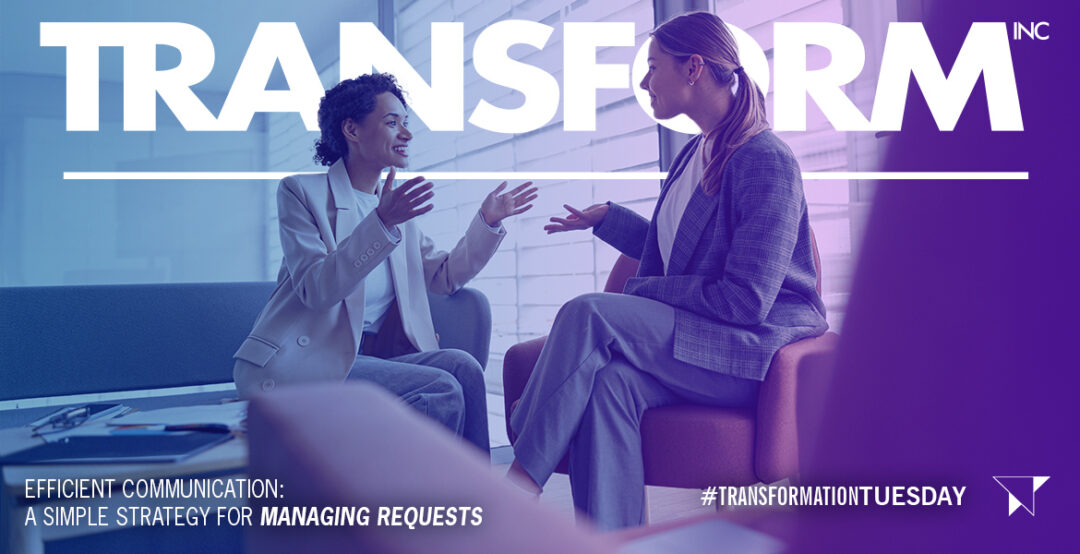For many of us, the volume of requests coming at us all day and every day can be daunting. Keeping up and moving things along to achieve what’s needed can be equally challenging. Here’s a simple, effective communication strategy for many requests.
When we reach out to a team member, we need something — typically one of these five things:
- We need to give them a heads-up or FYI.
- We need to request that they get back to us on something – Response Requested.
- We have a Question.
- We need Input.
- We need a Decision.
These requests have varying levels of urgency. When you need a decision or input, you are typically stopped from continuing your work or completing a task until you get a response. The other possibilities generally have a lesser urgency, as you can continue to work while you await feedback.
Using these levels to indicate your request’s urgency is a strategy that is helpful to all. By communicating the level of urgency you have in getting a response back, you help the receiver prioritize their reply, and you have asked for what is needed. To apply this strategy, a key thing is first to identify clearly what you need, when you need it, and then to let the receiver know that information right up front. Remember, just because it’s your priority doesn’t mean it’s someone else’s. You still need an agreement.
When sending an email, include the Subject Line: [What you need], [on what], [by when].
An example is:
Subject: Input needed on Miller home by close of business Friday.
Now the individual who receives the email has three choices: respond and say, “Got it, I will get back to you by [insert time frame],” respond saying that s/he can’t meet the deadline but offers when s/he could, or lastly, calls or stops by to discuss the request with the requestor. The point here is that the requester knows that the email was received and now has an expectation for when a response will be received.
You can use this same process when leaving a voicemail by stating up front what you need and then providing the details. Likewise, when you go to speak with someone in person, start by stating what you need so the person knows the urgency of your request.
When everyone on a team or in the company uses this same method for making requests, response times are increased, individuals get what they need when they need it, and, overall, communication in the organization is efficient, productive, and effective.
Give this strategy a try and let us know how it goes. We’re just a phone call away if you need us.




